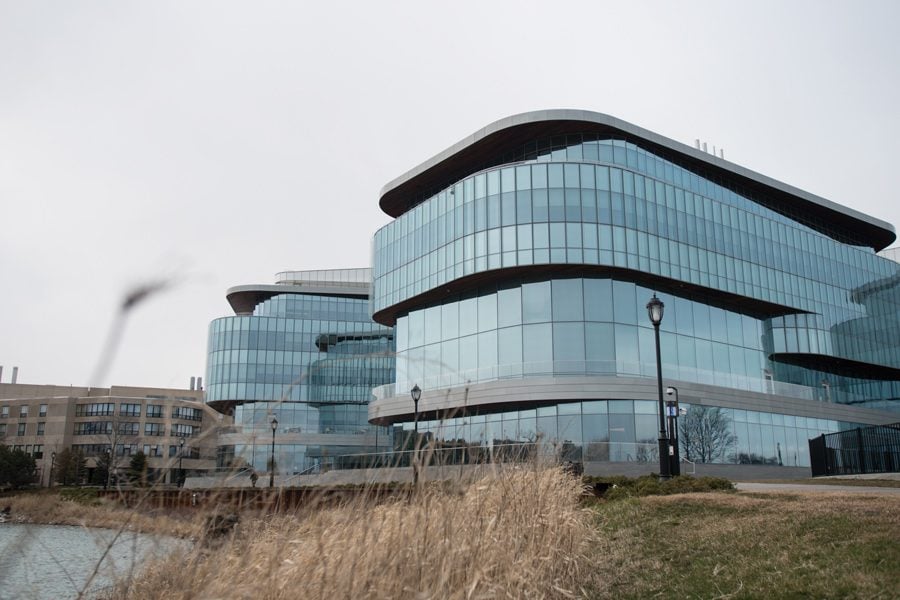Potato crops helped keep peace for centuries, NU professor-led study reveals
Daily file photo by Colin Boyle
The Kellogg School of Management Global Hub, 2211 Campus Drive.
May 20, 2018
Regardless of if they are mashed, scalloped or fried, potatoes can save lives.
A study, detailed in a May 2 news release, was co-authored by Kellogg Prof. Nancy Qian and shows that areas with potato crops experienced a “significant reduction” in armed conflict from 1700 to 1900.
Qian, a professor of managerial economics and decision sciences, along with Prof. Nathan Nunn from Harvard University and Prof. Murat Iyigun at the University of Colorado, found a decrease in conflict of about 10 percent in areas that grew potatoes, according to the study.
The study was conducted by looking at conflict data from 1400-1900 across Europe, northern Africa and the area of the former Ottoman Empire. For the study, conflict was defined as any battle in which 32 or more fatalities occurred. The final analysis divided those areas into cells of 400 square kilometers and compiled conflicts for 25-, 50- and 100-year intervals.
The 10 percent decrease translates roughly to 11 fewer conflicts per cell every 25 years after 1700, when the potato crop was introduced, Iyigun said. Conflict was increasing everywhere during that time period, but the cells with potato crops experienced a smaller increase by 10 percent.
The study’s methodology was formatted like a similar 2011 study by Qian and Nunn that looked at the potato’s effects on population growth and urbanization. Iyigun, a self-proclaimed “conflict guy,” joined the team after meeting Nunn at a talk about the 2011 paper, and brought in conflict data from his time studying war around Turkey and the Ottoman Empire.
Iyigun said that in previous economic development research, the longest time window studied was 60 years. This study adds more context, while helping to answer the long-standing fundamental question of how to live in peace, Iyigun said.
“We have this huge time horizon of 500 years, and the shock we’re considering isn’t like rainfall variation, but a permanent change in what you were able to produce,” Iyigun said. “When you take the perspective of what we did, over a very long time, you can see those changes, especially when we look at permanent change like agricultural productivity.”
The researchers chose to study potatoes because data exists from both before and after its introduction as a crop, Qian said.
The potato also provided more calories and required fewer resources to grow than other staples of the time, which may have been why it had such an effect on conflict, Qian said.
“If you’re fighting over a land because you need land to produce food, because without food you starve, then if the same piece of land can produce more food, you just don’t need to fight as much,” Qian said.
To ensure the results were actually caused by the potato, the professors controlled for other factors including geographic characteristics of different cells, weather shocks and how other staple crops affected violence. The data remained robust regardless of the controls or how the data was cut, Iyigun said.
Looking ahead, as part of this study, the three professors are continuing their research by collecting data on and looking for connections between nation sizes and potato crops during the same time period.
In the meantime, the ongoing study has revealed the general relationship between a population’s food supply and conflict throughout history, which can be loosely applied to resources today, Qian said.
“There’s conflict over oil and other things,” Qian said. “This just shows that when you have more of those resources, people need to fight less.”
Email: [email protected]
Twitter: @rachkupfer


